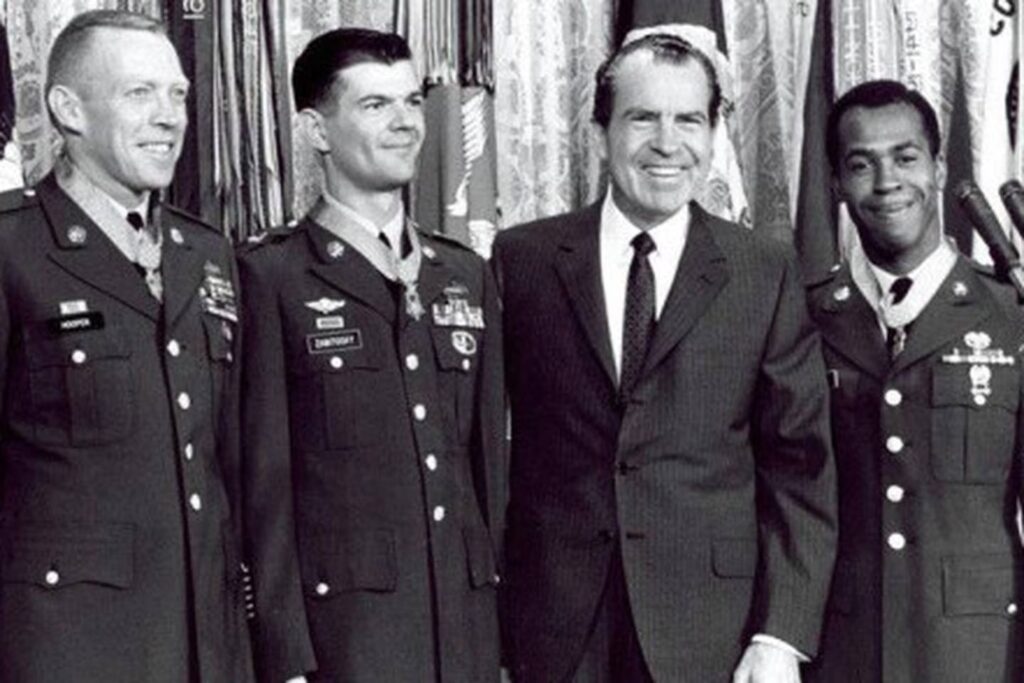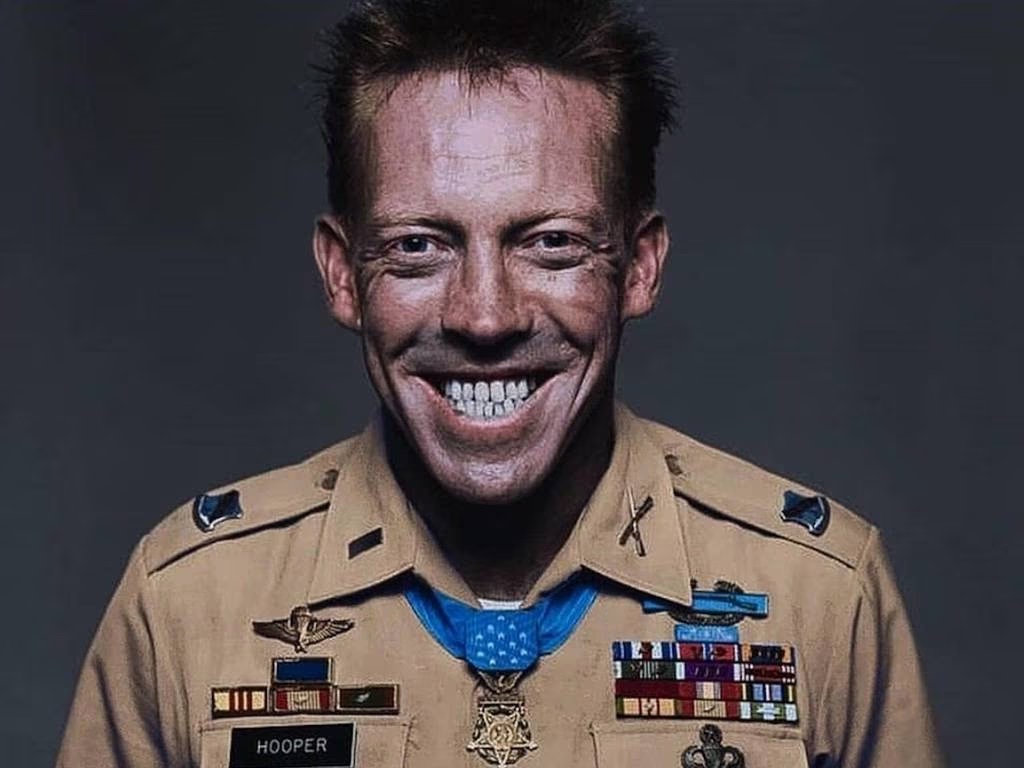Nearly 50 years after he retired from the Army, Capt. Joe Ronnie Hooper’s service record remains one of the most astonishing testaments of bravery in the service’s long history.
When the day came to hang up his uniform for the last time, the Piedmont, South Carolina, native’s awards included two Silver Stars, six Bronze Stars, eight Purple Hearts, and a slew of other accolades, including the U.S. military’s highest commendation for valor, the Medal of Honor.
Hooper earned that last award on the evening of Feb. 21, 1968, during the Battle of Hue — a bloody month-long fight that would leave thousands dead and begin to shift public perception of the war in the U.S. That day, Hooper would be credited with 22 confirmed kills.
Then a staff sergeant, Hooper was on his second deployment to Vietnam when he was tasked with leading a squad of Delta Raiders — Delta Company, 2nd Battalion, 101st Airborne Division — in an assault on a heavily defended Viet Cong position on the far side of a stream that stretched 20 feet from one side to the other.
The Viet Cong, however, were ready, and unleashed a steady hail of small arms, machine gun and rocket fire that pinned down the majority of Hooper’s men. A few soldiers, with Hooper leading, managed to avoid the barrage long enough to push across the stream and come face to face with a series of enemy gun positions. The rest of the unit soon followed.
As friendly casualties mounted, the soldiers’ focus began to shift to evacuating the wounded. Hooper himself was seriously injured as he retrieved a hobbling soldier, but he refused medical attention, turning back instead and charging and destroying three enemy bunkers — with his rifle and grenades — that had been tormenting the advancing unit.

Two more enemy combatants who had just shot an Army chaplain were then spotted by the staff sergeant. Hooper promptly shot them both before moving the wounded chaplain to safety.
Gathering his men to sweep the rest of the area, Hooper spotted three more enemy emplacements, small buildings where riflemen were still peppering the advancing U.S. forces. Hooper wasted little time attacking one after another, and was decimating the last of the three sites when he came face to face with a North Vietnamese officer.
“The officer’s rifle jammed and Sgt. Hooper was out of ammo as the enemy tried to escape,” Lonnie Thomas, a soldier who served under Hooper, told the Pentagon in 2019. “But Sgt. Hooper chased him down and stabbed him with his bayonet.”
Hooper then turned his attention to a small enemy-held building facing the front of the Delta Company assault. Storming the structure alone, Hooper once more deployed a deadly combination of rifle fire and grenades to eliminate its inhabitants. He then reorganized his men into an assault formation, despite bleeding severely from multiple wounds, and pushed forward until reaching the Viet Cong’s last line of resistance.
To the left flank of the advancing men was a chain of four enemy bunkers that unleashed hell when they spotted the weary soldiers. Once more, the shrapnel-riddled Hooper waited for no one, sprinting along the enemy line and dropping grenades into each bunker, killing all but two of the enemy fighters.
After locating and destroying two more enemy fortifications, Hooper spotted a wounded soldier laying in a nearby trench on the other side of open terrain — but the staff sergeant was out of ammunition.Near Hooper was Thomas, who said he “called to [Hooper] and tossed him a .45-caliber pistol” that he could use on his way to the wounded soldier.
“No sooner had he caught it and turned than he came face to face with an NVA raising a rifle to Sgt. Hooper’s head,” Thomas recalled. “Sgt. Hooper calmly shot the man dead with the pistol, then carried the wounded man back to safety.”
And yet, Hooper was not done, maneuvering instead to eliminate three more NVA officers before positioning his men into a line of defense. Only then did he finally acquiesce to receiving medical treatment — a full seven hours after the fight of his life began.
“Sgt. Hooper in one day accomplished more than I previously believed could have been done in a month by one man, and he did it all while wounded,” Sgt. George Parker, who served with Hooper, said in a Defense Department press release. “It wasn’t just the actual count of positions overrun and enemy killed which was important. But far more so was the fantastic inspiration he gave every man in the company.”
Hooper was presented the Medal of Honor by President Richard Nixon on March 7, 1969. He would be commissioned as an officer before retiring from the military in 1974. At the time of his retirement, the Army had credited him with 115 confirmed enemy KIA.
Tragically, Hooper passed away at the young age of 40 after suffering a cerebral hemorrhage. He is buried at Arlington National Cemetery.
Read his full Medal of Honor citation here.
Originally published by Military Times, our sister publication.





